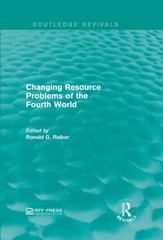Answered step by step
Verified Expert Solution
Question
1 Approved Answer
Point out correct and incorrect points from each statement Respond to each number separately Prompt that was used for the original statements: What are the
Point out correct and incorrect points from each statement
Respond to each number separately
Prompt that was used for the original statements: What are the three types of scale? Why does each type of scale occur? Explain.
- The three types of economic scales are economies of scale, diseconomies of scale, and constant returns to scale. Economies of scale happens when more units of an item or service can be produced on a bigger scale with lower input costs. Being bigger helps a business. If it grows larger, its costs drop, making it more profitable than smaller businesses. An example of this are "warehouse stores" like Costco and Walmart. Diseconomies of scale occurs when a firm can grow so large that it can become very difficult to manage, leading to high costs as multiple levels of management try to communicate with each other. This is why there aren't many factories that are too large, because with very high production costs, they can't compete in the long term with factories with lower average production costs. A constant return to scale is when an increase in input results in a proportional increase in output. For example, let's say a cookie manufacturer doubles its total input and ends up doubling its total output, then it has achieved constant returns to scale. There is also increasing return to scale and decreasing return to scale. If a cookie manufacturer doubles it's input but only gets a 20% increase in total output, then it experiences a decrease in return to scale. If a cookie manufacturer doubles input and ends up tripling its total output, then it has experienced increasing returns to scale.
- The three types of scale are: economies of scale, constant returns to scale, and diseconomies of scale. First, there are economies of scale which is the "long-run average cost of producing output decreases as total output increases" (Lumen Learning). Another way of saying this is when the quantity of output increases, the cost per unit will decrease. An example where you can see this occur are warehouse stores such as Costco and even Walmart. There are several reasons why this scale occurs, but one of the most common reasons is because technology is able to significantly increase production volumes. Then, there are constant returns to scale which is when "expanding all inputs proportionally does not change the average cost of production" (Lumen Learning). Another way of describing this type of scale is that when a company changes their resources (inputs) and their results are proportionally the same change in production (outputs). An example of this is when a company doubles its production (output), then it has essentially reached the constant returns to scale. Lastly, there are diseconomies of scale which is, "the long-run average cost of producing output increases as total output increases" (Lumen Learning). Another way of viewing this is when a company grows so much to the point where the costs per unit increases. This occurs when the management fails to communicate, coordinate and employees have no motivation.
Step by Step Solution
There are 3 Steps involved in it
Step: 1

Get Instant Access to Expert-Tailored Solutions
See step-by-step solutions with expert insights and AI powered tools for academic success
Step: 2

Step: 3

Ace Your Homework with AI
Get the answers you need in no time with our AI-driven, step-by-step assistance
Get Started


